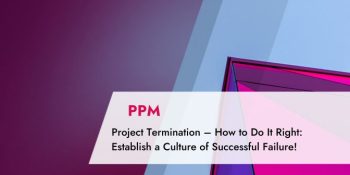Everyone wants successful projects, right? Yet in reality, there is often a lack of clarity about what project success really means. So, how exactly do you define project success? And how do you respond when there are conflicting views about this at your company? What you will learn in this article:
- Definition project success
- Criteria for project success
- Different stakeholders in the project environment
- What is the role of the stakeholders?
- How to define project success together at your company
- Practical tips: project proposal, stakeholder map, target circle
- Typical stumbling blocks
- Conclusion ‒ What is project success?
Definition Project Success
The term project success is usually used to describe the positive completion of a project, if the defined goals and requirements have been met within the set time frame, budget and in compliance with quality standards. Factors such as effective communication, teamwork and the fulfillment of customer requirements play a decisive role. Project success is often measured in terms of overall performance and the added value for the stakeholders.
For companies, project success is about using projects to increase or improve the value of the company. However, this does not have to happen with every project.
- What is the project meant to contribute to the company?
- Does the project provide the expected additional value?
- Are all stakeholders of the project satisfied?
It tends to be difficult to answer these questions directly after the completion of a project. So, it is better to take a longer-term perspective. What exactly this could look like, and which factors it is necessary to consider, will be explained further below in this article.
For a start, let us consider the criteria for project success.
Criteria for Project Success
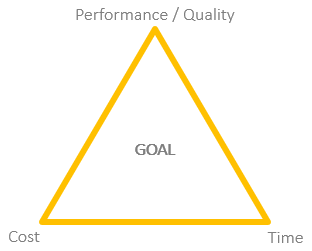
The magic triangle in project management helps determine the success of a project using three parameters. Performance scope, time and cost. These three goals are represented by the corners of a triangle.
Yet, the Association for Project Management (APM) found out that these were by far not all decisive factors in the study “Conditions for project success” published in 2021. The study surveyed 850 project professionals from across the private and public sector.
The survey shows that only a total of 22 percent of all projects are regarded as successful. The following success factors were rated as particularly important by the respondents:
- Planning
- Team composition
- Goal definition
- Governance
- Commitment to success
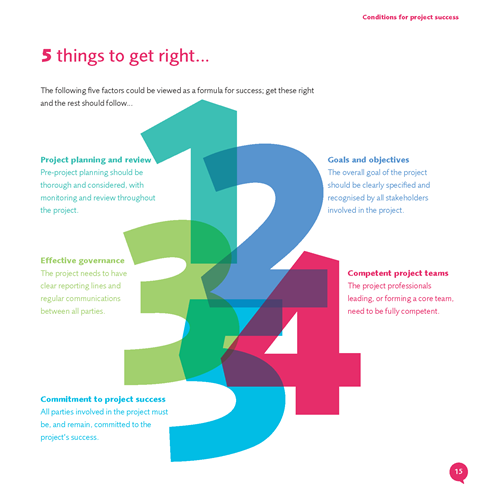
Factors such as budget, methods or tools and standards were not rated as equally decisive.
Different Stakeholders in the Project Environment
You have already learned that the satisfaction of all stakeholders is an important factor for project success. Yet, who exactly does this refer to?
At the beginning of a project, you traditionally begin with a stakeholder analysis. This serves to define all stakeholders clearly under consideration of all influencing factors and project risks.
Find more detail on this topic here: Stakeholder Analysis and Stakeholder Management in the Project Environment
Active stakeholders are for example:
- Project team
- Project management
- Project customers
- Customers
Passive stakeholders are for example:
- Staff council
- Authorities
- Employees that are indirectly affected by the project
A good kick-off workshop will also benefit project success. Read article.
Special Download: How to setup a PMO in 4 simple steps (PDF file)
Please fill in the form.
* Required Fields | Data Protection
What is the Role of the Stakeholders?
What sounds simple in theory turns out to be more difficult than expected in the day-to-day project work. The different stakeholders have different attitudes and expectations regarding a project.
To the project customer, it matters for instance that:
- The project goals are achieved
- Challenges are mastered
- The results of the projects are embedded in the daily business
- The customer receives the desired result
On the other hand, project managers focus primarily on the objectives that:
- Project goals are achieved
- Framework conditions are met
- The project team is satisfied
Whereas project portfolio management and controlling are more likely to focus on the aspects that:
- The status is reported regularly
- There is financial transparency during the project
- The budget is met
These are just a few examples, yet they clearly reveal the problem: at bottom, all stakeholders have very different ideas of what project success is.
The different expectations regarding the meaning of project success mean that conflicts in companies can arise quickly. If these are not resolved from the beginning, they will sooner or later lead to discontentedness. Maybe not for all stakeholders, but at least for some.
In the worst case, this leads to extra work, or the project gets delayed. Other possibilities are that dissatisfaction increases or projects are even discontinued because one did not get what one expected.
Tip: The different attitudes of stakeholders do not always present a risk but can also be an opportunity! Identify and analyze the stakeholders’ expectations on a regular basis. This will allow you to provide support using the right measures and remove stumbling blocks in good time.
How to Define Project Success Together at Your Company
What can you do when the ideas and attitude of the individual stakeholders at your company regarding project success clearly diverge?
Take enough time to define the project. The questions below may help you with this. Make sure you resolve them with all relevant stakeholders at the beginning of the project:
- What should be better or different after the project?
- Who is affected by the project, even indirectly?
- What are the dos and don’ts?
- What is the approach?
- What is necessary to embed the change in the organization?
- What exactly is meant to be realized?
Tip: Think of physical deliverables, such as e.g. modified process documents, trainings, etc. This makes it clear to all participants what they will get after the project.
Reading tip: Would you like to stay in control throughout the course of the project? Read this article: Project status report – Contents, Template and Process
Practical Tips: Project Proposal, Stakeholder Map, Target Circle
Project Proposal
To be able to define project success clearly, it is moreover helpful to introduce an additional step before the project charter: the project proposal.
This is a short, 1-2-page document explaining what the project is meant to be carried out for.
The project proposal should give precise answers to the following questions:
- What is the initial situation?
- Where is the challenge?
- What should be changed?
- What should be achieved?
- What is the approach roughly?
- Which efforts are to be expected roughly?
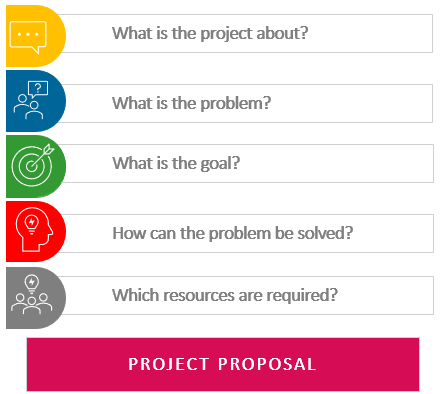
After this, the project proposal is presented to the steering board. This body decides whether the project will be undertaken or not.
Only after the approval of the project proposal, you start drawing up the project charter.
The introduction of a project proposal has the following advantages:
- It helps further a deeper discussion (on the one hand among the idea providers of the project and on the other hand among the business leaders)
- It helps with the assembly of the team, as there are clear specifications as to what is to be achieved
Stakeholder Map
In a second step, the challenge is to find out which other stakeholders there are. For this purpose, you draw up the so-called stakeholder map.
The stakeholder map resolves questions such as for example:
- Who are all the people affected by the project?
- How high is the probability that person XY will support the project?
- Where might individuals XY block something?
- How important are individuals XY for our project?
- Are there connections between the individuals, which one could make use of?
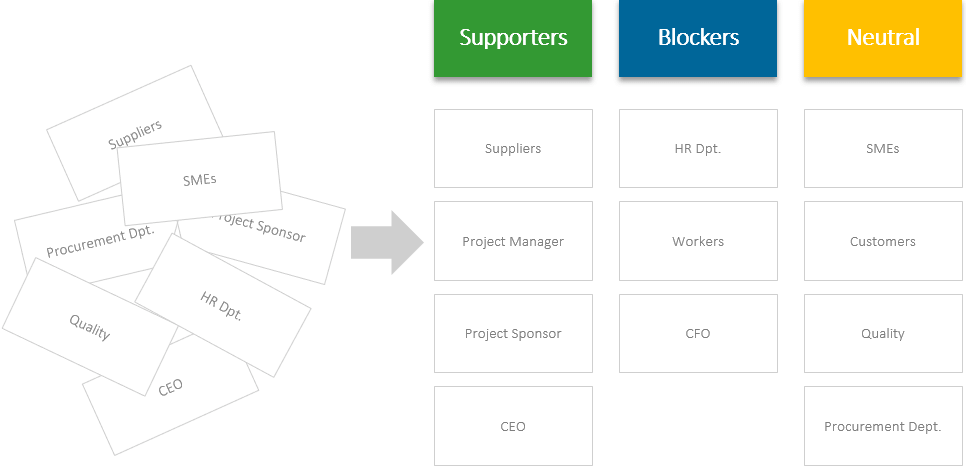
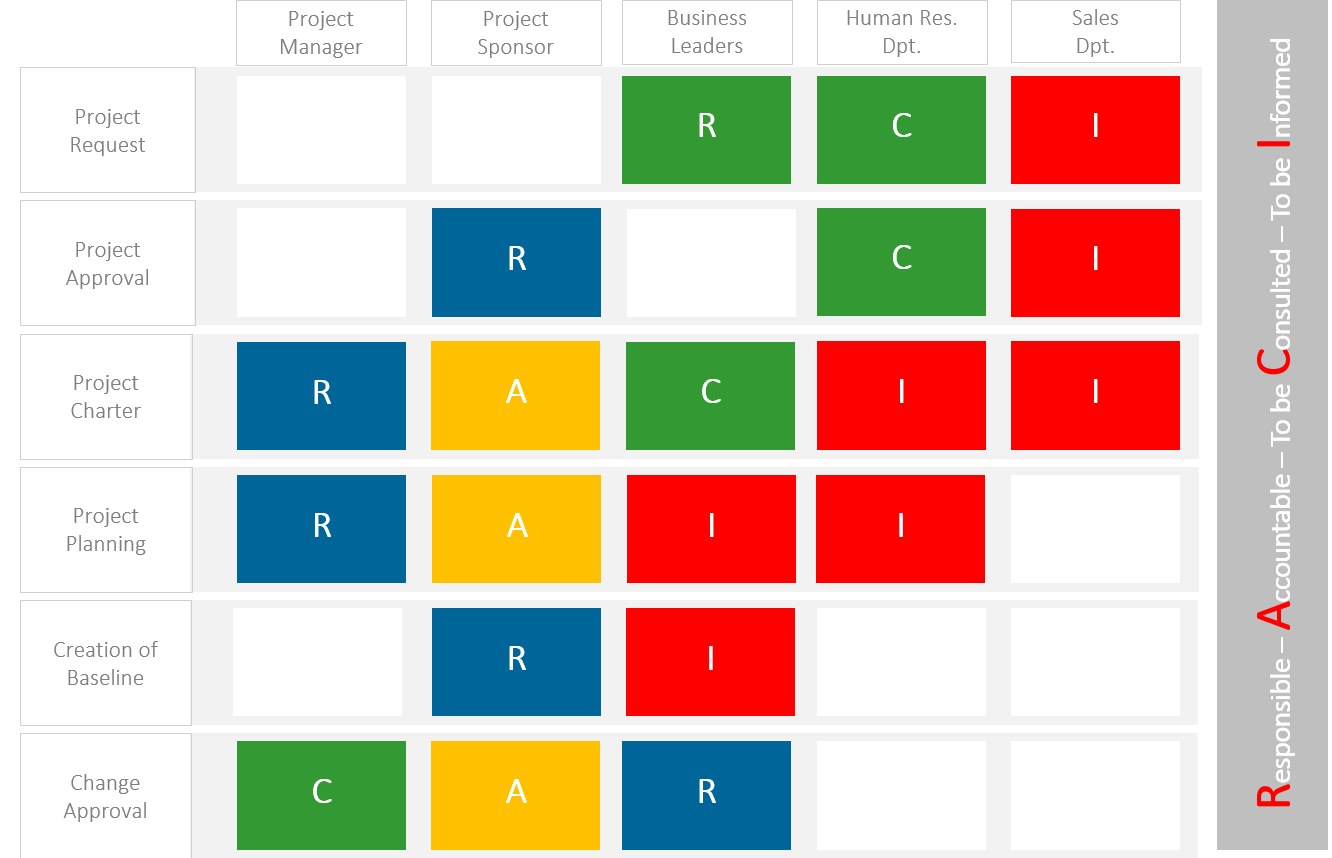
Tip: Keep updating your stakeholder map in the course of the project and adapt it to changed framework conditions if necessary.
Target Circle
A target circle can serve as an ideal tool for joint discussion. It consists of four quadrants:
- What is the higher-level goal? What is to be achieved?
- Who is affected or involved? Which resources does the project require?
- Why should the project be implemented?
- How is the project to be implemented? What are the expectations of the project? This is where you can add for example financial target numbers or times.
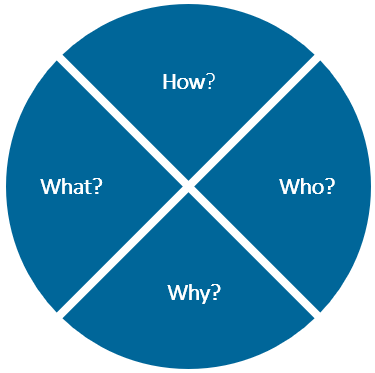
The target circle, too, should be discussed together. The room is limited, which in turn limits the selection of the targets. Hence, the challenge is to define the key points for you and all participants.
Tip: Start the discussion with all participants to define project success and answer the questions from the target circle in good time.
Reading tip: 7 Crucial Success Factors for Multi-Project Management (+Checklist)
The results of the target circle serve as a basis for the project proposal.
Tip: In reality, you will find that not all relevant individuals are available straight away. Therefore, work in iterations, i.e. from the rough to the detailed. Stakeholder map and target circle can also be drawn up in parallel depending on the availability of the required individuals. However: the more people you have on board from the beginning the better. This is the quickest way to gather all relevant information and perspectives.
What Are Typical Stumbling Blocks?
There will always be colleagues who are itching to get going and would like to start straight away instead of discussing first. It is necessary to convince them of the benefits of the preliminary discussions. After all, they will also benefit if all goals are neatly drawn up.
Make the necessity for the preliminary talks clear to everyone!
This is usually accompanied by operational problems:
- When do I get everyone together and where?
- How long will it take to get everyone together?
- Will only one meeting suffice to obtain clarity or may we need several talks?
Resolving these operational problems can take a bit of time in reality. Do not let this discourage you!
Project wisdom: “Tell me how a project begins, and I will tell you how it will end.”
Keep this project wisdom at the back of your mind. Often, failed projects can be traced back to the fact that one did not take enough time at the beginning.
Yet, if you are unclear about what is expected, you will always be disappointed with the result.
Reading tip: An initial role clarification workshop can also boost project success.
Therefore, make the benefits from the steps described above clear to all participants:
- Clarity among all participants
- Idle times can be avoided
- If everyone knows what is to be achieved, this makes it easier for each person to work independently
- Increase in motivation throughout the team
- The project team is always able to explain why the project is being carried out
Conclusion ‒ What Is Project Success?
In this article, you have learned that it is worth investing time in the clear definition of project success.
Always take this time before you start a new project. Otherwise, it can quickly come to pass that your project uses up unnecessary resources or takes a wrong turn.
Try to understand who the most important contacts or groups are and what they expect. What do you, but also all other participants, regard as project success? The project proposal, a stakeholder map or a target circle talk can help you find this out together.
Our final tips:
Get to know the individually adaptable “PPM Paradise” – the optimal environment for your enterprise-wide project, program, portfolio and resource management (PPM). Download the free eBook “The PPM Paradise” now (just click, no form).
And sign up for our bi-weekly blog newsletter with information on more hands-on articles, eBooks, etc. to improve your project management maturity level.
How would you define project success? Please write to us in the comment section below.
Subscribe to TPG BlogInfo: Never miss new practice-oriented tips & tricks
Every other week: Receive practical tips in TPG blog posts written by recognized experts in project, portfolio, and resource management.
* Required Fields | Data Protection
 Anna Pauels
Anna Pauels
Content Marketing Professional
Anna has worked as a content creator for the TV stations ARD and ProSieben, as well as newspapers such as Münchner Merkur and tz, and numerous lifestyle magazines. Today, Anna Pauels is part of the Marketing team at TPG The Project Group, handling the German, English, and French versions of the blog as well as the social media channels and the monthly newsletter.
 Markus Aeschimann
Markus Aeschimann
Change Management Officer
In his over 25 working years, Markus Aeschimann has worked in various industries in Switzerland – from the insurance business and banking to management consulting and the luxury goods industry through to healthcare. He has managed projects or supported entire organizations in implementing their project portfolios as a Project Management Office manager.
You can read more about Markus Aeschimann on LinkedIn.









